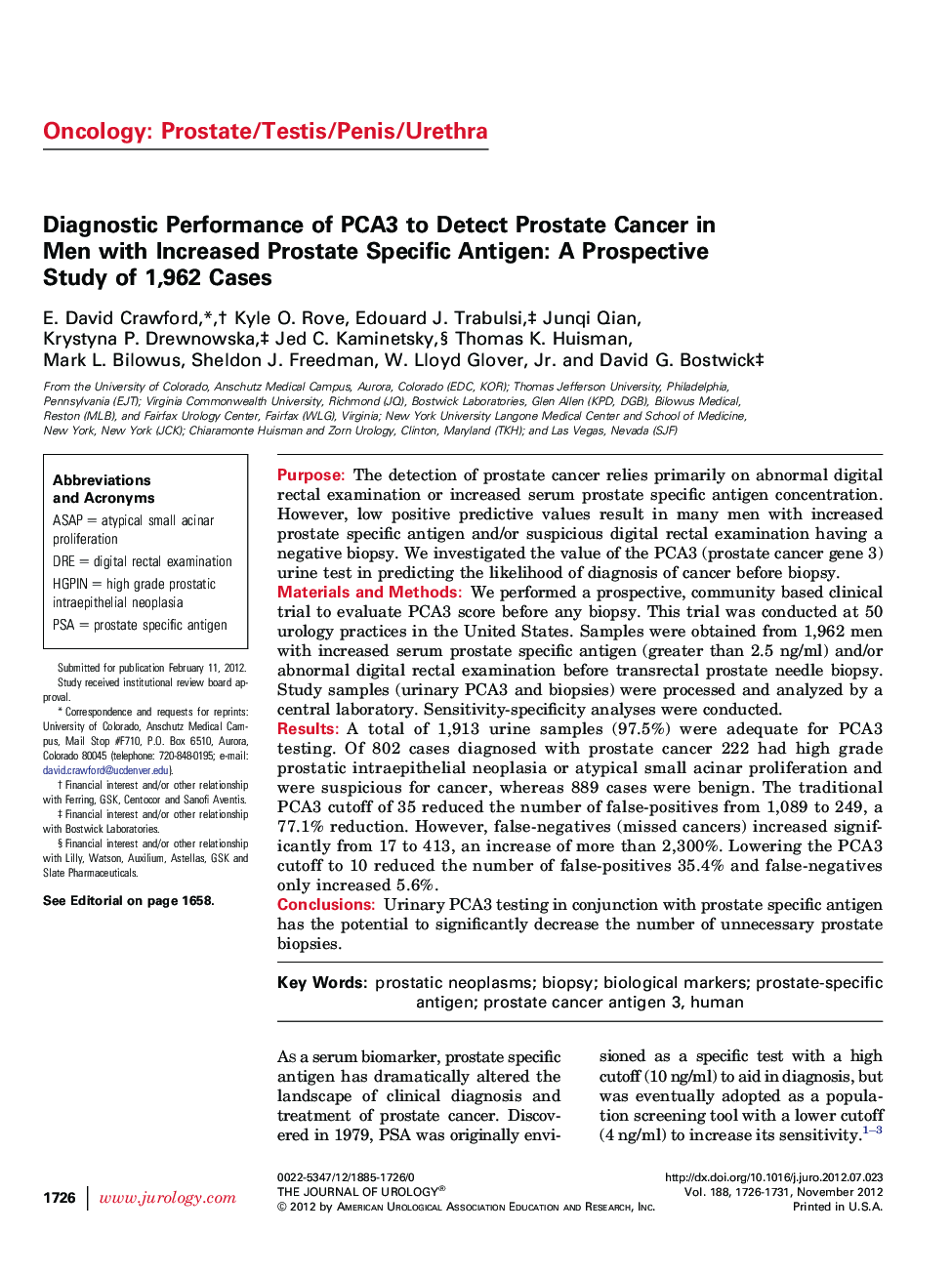| Article ID | Journal | Published Year | Pages | File Type |
|---|---|---|---|---|
| 3865997 | The Journal of Urology | 2012 | 6 Pages |
PurposeThe detection of prostate cancer relies primarily on abnormal digital rectal examination or increased serum prostate specific antigen concentration. However, low positive predictive values result in many men with increased prostate specific antigen and/or suspicious digital rectal examination having a negative biopsy. We investigated the value of the PCA3 (prostate cancer gene 3) urine test in predicting the likelihood of diagnosis of cancer before biopsy.Materials and MethodsWe performed a prospective, community based clinical trial to evaluate PCA3 score before any biopsy. This trial was conducted at 50 urology practices in the United States. Samples were obtained from 1,962 men with increased serum prostate specific antigen (greater than 2.5 ng/ml) and/or abnormal digital rectal examination before transrectal prostate needle biopsy. Study samples (urinary PCA3 and biopsies) were processed and analyzed by a central laboratory. Sensitivity-specificity analyses were conducted.ResultsA total of 1,913 urine samples (97.5%) were adequate for PCA3 testing. Of 802 cases diagnosed with prostate cancer 222 had high grade prostatic intraepithelial neoplasia or atypical small acinar proliferation and were suspicious for cancer, whereas 889 cases were benign. The traditional PCA3 cutoff of 35 reduced the number of false-positives from 1,089 to 249, a 77.1% reduction. However, false-negatives (missed cancers) increased significantly from 17 to 413, an increase of more than 2,300%. Lowering the PCA3 cutoff to 10 reduced the number of false-positives 35.4% and false-negatives only increased 5.6%.ConclusionsUrinary PCA3 testing in conjunction with prostate specific antigen has the potential to significantly decrease the number of unnecessary prostate biopsies.
